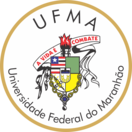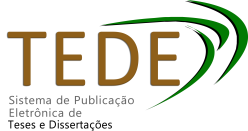| Compartilhamento |


|
Use este identificador para citar ou linkar para este item:
https://tedebc.ufma.br/jspui/handle/tede/5597Registro completo de metadados
| Campo DC | Valor | Idioma |
|---|---|---|
| dc.creator | SILVA, Daiany Santos | - |
| dc.creator.Lattes | http://lattes.cnpq.br/9232050605132323 | por |
| dc.contributor.advisor1 | SILVEIRA, Francisca Morais da | - |
| dc.contributor.advisor1Lattes | http://lattes.cnpq.br/0012238764045677 | por |
| dc.contributor.referee1 | SILVEIRA, Francisca Morais da | - |
| dc.contributor.referee1Lattes | http://lattes.cnpq.br/0012238764045677 | por |
| dc.contributor.referee2 | FERREIRA, Heridan de Jesus Guterres Pavão | - |
| dc.contributor.referee2Lattes | http://lattes.cnpq.br/3143175326460687 | por |
| dc.contributor.referee3 | LEAL, Carlos Santos | - |
| dc.contributor.referee3Lattes | http://lattes.cnpq.br/7949486810256742 | por |
| dc.contributor.referee4 | SILVA, Ilma Maria de Oliveira | - |
| dc.contributor.referee4Lattes | http://lattes.cnpq.br/6733654907197313 | por |
| dc.contributor.referee5 | ALVES, Cândida Helena Lopes | - |
| dc.contributor.referee5Lattes | http://lattes.cnpq.br/4229863536146724 | por |
| dc.date.accessioned | 2024-11-18T17:40:28Z | - |
| dc.date.issued | 2024-03-05 | - |
| dc.identifier.citation | SILVA, Daiany Santos. A perspectiva da inclusão e construção de identidade de discentes canhotos no ensino fundamental: uma discussão no contexto das escolas do Município de Guimarães/MA. 2024. 79 f. Dissertação (Programa de Pós-Graduação em Formação Docente em Práticas Educativas - PPGFOPRED) - Universidade Federal do Maranhão, Imperatriz, 2024. | por |
| dc.identifier.uri | https://tedebc.ufma.br/jspui/handle/tede/5597 | - |
| dc.description.resumo | Perpetuou-se, durante muito tempo, algumas crenças em relação à pessoa canhota pertencer às forças do mal ou estar atrelada ao negativo. Houve época na qual os pais orientavam as crianças, logo cedo, a controlarem o uso da mão direita em vez da esquerda, tanto para uso de objetos, como para se alimentar. Em se tratando do ambiente escolar, o canhotismo tem ocasionado algumas dificuldades, seja no tocante ao desconforto ao sentar-se, dores na articulação do braço em função da postura inadequada e modificações no desenvolvimento da escrita, dificultando a concentração as aulas. Desse modo, objetivou-se neste trabalho analisar de que modo as escolas em Guimarães, em especial no nível de ensino fundamental, anos finais, tem possibilitado a inclusão e a construção da identidade de escolares canhotos, no contexto do processo de ensino e de aprendizagem. A metodologia foi organizada por uma pesquisa de campo que, segundo Marconi e Lakatos (2017), permite ao investigador mais proximidades com os sujeitos da pesquisa. A abordagem escolhida foi a qualitativa, descrita por Gil (2010) como aquela que não foca em quantificar, mas toma como base interpretações da realidade social, sem se ater ao levantamento de números. Como instrumento de coleta de dados utilizou-se a entrevista semiestruturada que segundo Fonseca (2002) permite maior flexibilidade de respostas dos entrevistados e maior compreensão sobre a investigação proposta. Os resultados apontaram para ações tímidas sobre o canhotismo em Guimarães. Algumas docentes se mostram preocupadas, mas sem evidenciar, na prática, o que faz, como faz e o que agrega nesse cenário. As singulares atitudes tomadas pela gestão escolar nesse cenário evidenciam uma responsabilidade atribuída somente ao professor para lidar com a lateralidade. Os estudantes têm também seguido um processo no qual não entendem ainda, de forma completa a importância de a comunidade escolar os perceberem, para que possam assim dispor dos recursos que são necessários. Em muitos momentos relataram não ter problemas com o fato de serem canhotos, mas mostraram que ter carteiras ou algum material, poderia ser importante. As escolas ainda não possuem os materiais adaptados e as metodologias ainda não são alinhadas considerando essa especificidade, no entanto pode ser que no desenvolvimento completo da pesquisa outras perspectivas possam surgir. | por |
| dc.description.abstract | For a long time, some beliefs were perpetuated regarding left-handed people belonging to the forces of evil or being linked to the negative. There was a time when parents instructed children, early on, to control the use of their right hand instead of their left, both when using objects and when eating. When it comes to the school environment, left-handedness has caused some difficulties, whether in terms of comfort when sitting or the development of writing. Therefore, the objective of this work was to analyze how schools in Guimarães, especially at the elementary school level, final years, have enabled the inclusion and construction of the identity of left-handed students, in the context of the teaching and learning process. . The methodology was organized by field research which, according to Marconi and Lakatos (2017), allows the researcher to be closer to the research subjects. The chosen approach was qualitative, described by Gil (2010) as one that does not focus on quantifying, but is based on interpretations of social reality, without focusing on collecting numbers. As a data collection instrument, a semi-structured interview was used, which according to Fonseca (2002) allows greater flexibility in responses from interviewees and greater understanding of the proposed investigation. The results pointed to timid actions regarding left-handedness in Guimarães. Some teachers are concerned, but without showing, in practice, what they do, how they do it and what they add to this scenario. The unique attitudes taken by school management in this scenario highlight a responsibility attributed only to the teacher to deal with laterality. Students have also followed a process in which they still do not fully understand the importance of the school community understanding them, so that they can have the necessary resources. In many moments they reported having no problems with being left-handed, but they showed that having wallets or some material could be important. Schools do not yet have the adapted materials and the methodologies are not yet aligned considering this specificity, however it may be that in the complete development of the research other perspectives may emerge. | eng |
| dc.description.provenance | Submitted by Daniella Santos (daniella.santos@ufma.br) on 2024-11-18T17:40:28Z No. of bitstreams: 1 DaianySilva.pdf: 773648 bytes, checksum: cbddbf2b057741aa63a6dcf833829b26 (MD5) | eng |
| dc.description.provenance | Made available in DSpace on 2024-11-18T17:40:28Z (GMT). No. of bitstreams: 1 DaianySilva.pdf: 773648 bytes, checksum: cbddbf2b057741aa63a6dcf833829b26 (MD5) Previous issue date: 2024-03-05 | eng |
| dc.format | application/pdf | * |
| dc.language | por | por |
| dc.publisher | Universidade Federal do Maranhão | por |
| dc.publisher.department | DEPARTAMENTO DE PSICOLOGIA/CCH | por |
| dc.publisher.country | Brasil | por |
| dc.publisher.initials | UFMA | por |
| dc.publisher.program | PROGRAMA DE PÓS-GRADUAÇÃO EM FORMAÇÃO DOCENTE EM PRÁTICAS EDUCATIVAS - PPGFOPRED | por |
| dc.rights | Acesso Aberto | por |
| dc.subject | canhotismo; | por |
| dc.subject | lateralidade; | por |
| dc.subject | inclusão educacional; | por |
| dc.subject | left-handedness; | eng |
| dc.subject | handedness; | eng |
| dc.subject | education inclusion; | eng |
| dc.subject.cnpq | Educação | por |
| dc.title | A perspectiva da inclusão e construção de identidade de discentes canhotos no ensino fundamental: uma discussão no contexto das escolas do Município de Guimarães/MA | por |
| dc.title.alternative | The perspective of inclusion and identity construction of left-handed students in elementary school: a discussion in the context of schools in the Municipality of Guimarães/MA | eng |
| dc.type | Dissertação | por |
| Aparece nas coleções: | DISSERTAÇÃO DE MESTRADO - PROGRAMA DE PÓS-GRADUAÇÃO EM FORMAÇÃO DOCENTE EM PRÁTICAS EDUCATIVAS - PPGFOPRED | |
Arquivos associados a este item:
| Arquivo | Descrição | Tamanho | Formato | |
|---|---|---|---|---|
| DaianySilva.pdf | Dissertação de Mestrado | 755,52 kB | Adobe PDF | Baixar/Abrir Pré-Visualizar |
Os itens no repositório estão protegidos por copyright, com todos os direitos reservados, salvo quando é indicado o contrário.




